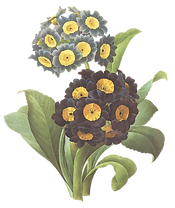Momo is a character from a Japanese horror sculpture that went viral on the internet in 2018. It was
- janinamills92
- Aug 14, 2023
- 2 min read
Momo is the colloquial form of the Tibetan word "mog mog".[2] It is possible that this Tibetan word is borrowed from the Chinese term momo (馍馍), a name traditionally used in northwestern Chinese dialects for bread.[3] The word mo (馍) itself means food related to flour.[4] As can be seen in dishes from Shaanxi cuisine like roujiamo and paomo. It could also be possible that it derived from Nepal Bhasa word mome (मम) which means cooking by steaming. The history of momo in Nepal dates back to as early as the fourteenth century. [5]
Traditionally, momo is prepared with ground/minced meat, potatoes, and leek filling. Nowadays, the fillings have become more elaborate and Momo is prepared with virtually any combination of ground meat, vegetables, tofu, mushrooms, paneer cheese, soft chhurpi (local hard cheese) and vegetable and meat combinations.
Momo
The dough is rolled into small circular flat pieces. The filling is enclosed in the circular dough cover either in a round pocket or a half-moon or crescent shape. People prefer meat with a lot of fat because it produces flavourful, juicy momos. A little oil is sometimes added to the lean ground/minced meat to keep the filling moist and juicy. The dumplings are then cooked by steaming over a soup (either a stock based on bones or vegetables) in a momo-making utensil called mucktoo. Momos may also be pan-fried or deep-fried after being steamed.
Momo are traditionally steamed but can also be deep-fried or pan-fried and cooked in soup. Momo is usually served with chilli garlic sauce and pickled daikon in Tibet. In Nepal, popular dipping sauces include tomato-based chutneys or sesame or peanut or soybean-based sauces called Jhol achar. Sauces can be thick or thin in consistency depending on the eatery (locally called achār[9]), usually made with tomato or peanut, sesame and soybean as the base ingredient. In Kathmandu valley, the traditional way of serving momo (called momochā or local momo) is ten ping-pong ball-sized round momo drowned in a sauce called jhol achar, infused with Timur pepper (Nepali pepper, a variety of Sichuan pepper). Jhol momo has warm or hot tomato-based broth poured over momo (not cooked in the broth[10]), whereas Jhol achhar is served in-room /cooled temperature. One of the main ingredients of jhol achar is Nepali hog plum (lapsi), but if this is unavailable, lemon or lime juice may be used.
Soup momo or mok-thuk (Tibetan) is another way to serve momos which usually involve using smaller shaped dumplings, where the momos are either cooked in broth for a type of dumpling soup or steamed momos, which are added to the broth. Pan-fried momo is also known as kothey momo. Steamed momo served in hot sauce is called C-momo. There are also a variety of dumplings of Nepal found in the Nepal state of Sikkim and Darjeeling district, including Tingmo and Tiebao.
Momose Inc. values your privacy. Email addresses, notes, and other content shared by visitors to this website or any affiliated page will not be provided or sold to any third party. All submitted content will become property of Momose Inc. and may be used for marketing and research purposes. If you have questions regarding this privacy policy, please contact info@momodressing.com. 2ff7e9595c



Comments